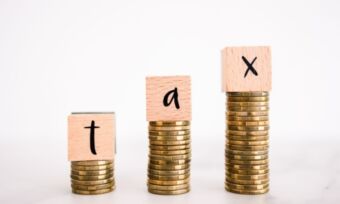How much super should I have at my age?
There may be a large gap between the amount of super you’ve saved by a certain age and how much you’ll actually need for retirement. If you’re wondering “how much super should I have?”, then you may be interested in things you can do to help boost your retirement fund.

There may be a large gap between the amount of super you’ve saved by a certain age and how much you’ll actually need for retirement. If you’re wondering “how much super should I have?”, then you may be interested in things you can do to help boost your retirement fund.
Key points:
- The superannuation lump sum needed for a comfortable retirement at 65 is currently $690,000 for a couple.
- Canstar’s Research shows many Aussies may lack the funds necessary to retire comfortably.
- If your super balance isn’t on track, there are a few things you can do to help bump it up.
Whether you’re fresh into the workforce, midway through your working life or a few years off retirement, it’s important to get familiar with your super balance. It’s always helpful to get a picture of where you stand to know whether you need to take action and put some extra funds in your superannuation.
How much super do I need to retire?
The average superannuation balance needed at age 65 for a comfortable retirement is $690,000 for a couple and $595,000 for a single person, according to the latest figures from the Australian Government’s MoneySmart website and the Association of Super Funds of Australia (ASFA). That’s assuming they withdraw their super as a lump sum and receive a part of the Age Pension.
According to the latest Australian Bureau of Statistics (ABS) figures, the government pension is the main source of income for most retirees, with 47% of men and 41% of women relying on it as their main source of income in retirement. 31% of retired women rely on their partner’s income to meet their living costs at retirement, as do 8% of retired men.
ASFA defines a comfortable retirement as one where a retiree can afford to be involved in a range of recreational activities, buy household goods and pay for things like top-level private health insurance, a reasonable car, electronic equipment and occasional travel, and a modest standard as one where money for basic necessities is taken care of.
The amount of superannuation you’ll need personally will vary according to the standard of living you want to maintain at retirement. The Australian Retirement Trust suggests that you would need two thirds of your current yearly income each year to maintain the same standard of living once you retire, based on the assumption that you own your home with no mortgage. But at whatever stage of life you’re at, you may be wondering how much super you should have to support a comfortable retirement.
So how do these expenses break down, and how does your super balance stack up at your stage of life?
 Online rollover
Online rollover
 Online application
Online application
 Online rollover
Online rollover
 Online application
Online application
 Online rollover
Online rollover
 Online application
Online application
 Online rollover
Online rollover
 Online application
Online application
 Online rollover
Online rollover
 Online application
Online application
Canstar may earn a fee for referrals from its website tables and from Promotion or Sponsorship of certain products. Fees payable by product providers for referrals and Sponsorship or Promotion may vary between providers, website position, and revenue model. Sponsorship or Promotion fees may be higher than referral fees.
On our ratings results, comparison tables and some other advertising, we may provide links to third party websites. The primary purpose of these links is to help consumers continue their journey from the ‘research phase’ to the ‘purchasing’ phase. If customers purchase a product after clicking a certain link, Canstar may be paid a commission or fee by the referral partner. Where products are displayed in a comparison table, the display order is not influenced by commercial arrangements and the display sort order is disclosed at the top of the table.
Sponsored or Promoted products are clearly disclosed as such on the website page. They may appear in a number of areas of the website, such as in comparison tables, on hub pages, and in articles. The table position of the Sponsored or Promoted product does not indicate any ranking or rating by Canstar.
Sponsored or Promoted products table
- Sponsored or promoted products that are in a table separate to the comparison tables in this article are displayed from lowest to highest annual cost.
- Performance figures shown for Sponsored or Promoted products reflect net investment performance, i.e. net of investment tax, investment management fees and the applicable administration fees based on an account balance of $50,000. To learn more about performance information, click here.
- Please note that all information about performance returns is historical. Past performance should not be relied upon as an indicator of future performance; unit prices and the value of your investment may fall as well as rise.
How much super do I need at my age?
Many Australians could be short in superannuation savings when it comes time to retire if they want to retire comfortably, Canstar data suggests. According to the latest APRA Quarterly superannuation figures, the average Aussie super balance is below what would be needed to support a ‘comfortable’ lifestyle in retirement.
Canstar’s Research shows that men currently aged 40 might currently have a shortfall of $60,000 in their super accounts relative to what would be needed to one day support a comfortable retirement, and women aged 40 have a shortfall of $75,000. The shortfall only increases as the average Aussie nears retirement age.
The table below shows estimates of how much super people of different ages should have in their balance today to be on track to afford a comfortable retirement.
How much super should I have?
← Mobile/tablet users, scroll sideways to view full table →
| Superannuation Balance Needed for a Comfortable Retirement |
||||
|---|---|---|---|---|
| Gender | Age | Average balance |
Balance required today for comfortable retirement |
Gap |
| Male | 30 | $40,000 | $59,000 | -$19,000 |
| 40 | $96,000 | $156,000 | -$60,000 | |
| 50 | $150,000 | $281,000 | -$131,000 | |
| 60 | $165,000 | $453,000 | -$288,000 | |
| Female | 30 | $38,000 | $59,000 | -$21,000 |
| 40 | $81,000 | $156,000 | -$75,000 | |
| 50 | $117,000 | $281,000 | -$164,000 | |
| 60 | $130,000 | $453,000 | -$323,000 | |
Source: www.canstar.com.au – 14/01/2025. Average balances based on those reported in the APRA Quarterly Superannuation Industry Publication (September 2024). Balance required today for comfortable retirement based on ASFA’s (The Association of Superannuation Funds of Australia) Super Balance Detective calculator for a person who turned 30, 40, 50 or 60 in 2024. Gap calculated as the difference between the average balance and the current balance required for a comfortable retirement. Comfortable retirement based on ASFA’s Comfortable Standard balance of $595,000 (in today’s dollars) by age 67. ASFA assumes future pre-tax wage income of around $65,000 and then upon retirement the retiree draws down all their capital and receives a part Age Pension. Other assumptions include: Investment returns (nominal), before investment fees and taxes are 6.7%, investment fees are 0.7% of assets, the tax rate is 4.5%, administration fees are $100 per annum and insurance premiums are $100 per annum. The reported required balances are intended for illustrative purposes only.
Remember these are only estimates and average figures, so it might be a good idea to check your own super balance to see if you’re on track to reach your goal when you plan to retire.
How much super do I need to retire at 60 in Australia?
The above estimates may give you an idea of the amount of super you would need for a comfortable retirement at age 60. The current balance required for both men and women is $453,000, but this assumes that you would continue to work. This also doesn’t take into account your retirement costs and how they would change if you were to retire earlier. You also won’t be able to access the age pension until you turn 66 (but this may depend on when you were born). You may wish to discuss your retirement plans with a professional financial advisor to get a better idea of the amount that you would need.
How much does it cost to live comfortably in retirement?
Couples aged 65-84 have a yearly spend of about $73,031 and singles spend approximately $51,814 to live comfortably in retirement, according to the most current figures reported by the ASFA.
In recent times, ASFA has flagged the fact that retirees have faced significant pressure on their household budgets due to the historically high inflation. Fortunately, inflation has dropped 5% from December 2022 to September 2024, hopefully bringing some relief to retiree budgets.
ASFA has compiled a breakdown of what a typical retiree would need to spend to live comfortably and modestly at ages 65 to 84.
Budgets for those aged 65-84
← Mobile/tablet users, scroll sideways to view full table →
| $ required |
Modest | Comfortable | ||
|---|---|---|---|---|
| Single | Couple | Single | Couple | |
| Total per week |
$631 | $909 | $993 | $1,399 |
| Total per year |
$32,930 | $47,475 | $51,814 | $73,031 |
Source: ASFA Retirement Standards, September Quarter 2024.
While these are just estimates, a more modest lifestyle will generally be cheaper than a comfortable one, but this may come at the cost of some aspects of retired life.
What are the average super balances for Australians by age?
Here’s how much the average super balances are for Australians based on their age, according to data from the Australian Prudential Regulation Authority (APRA).
← Mobile/tablet users, scroll sideways to view full table →
| Age | Average balance (men) |
Average balance (women) |
Difference (between men and women) |
|---|---|---|---|
| 30 | $40,000 | $38,000 | $2,000 |
| 40 | $96,000 | $81,000 | $15,000 |
| 50 | $150,000 | $117,000 | $33,000 |
| 60 | $165,000 | $130,000 | $35,000 |
Source: www.canstar.com.au – 14/01/2025 (from table above).
As you can see, there is a large discrepancy between men and women when it comes to their super balances.
How do I boost my super so I can retire comfortably?
If you’ve found your super balance isn’t on track for your retirement plans then there are a few things you can do to help bump it up.
You can start by checking for any lost super you may have forgotten about, possibly from a previous job. If you had what’s known as an inactive low-balance super account, generally one less than $6,000 that hasn’t been added to for the past 16 months, then your super fund is required to pay that money to the Australian Taxation Office (ATO) to protect the account from getting eroded by fees.
The ATO says it will then try to consolidate the money into your active super account. If you’ve several it will pick one based on the relevant super laws. If there is no eligible super account to pay the money to then it will determine where it’s held for you.
If the amount in the inactive account is less than $200 or you’re aged 65 and over, the ATO may make a direct payment to you. Whatever happens, the ATO says it will try to get in touch with you to explain what has happened, so it’s important to always keep your contact details up-to-date (usually through your mygov account).
You can make additional contributions to your super, such as through salary sacrificing from your pre-tax earnings if that’s an option. There may be other options if you’re on a low income.
You should regularly give your fund a quick health check to make sure you’re in the right investment profile for your needs and be sure you’re not paying too much in fees. You can also check the level of insurance you have through super (such as for life insurance and income protection) to make sure the cover is right for your current needs and/or that you aren’t doubling up on coverage from external policies you may have.
You should also check that your fund’s performance is on par with its peers over the long-term (bearing in mind that past performance is not necessarily indicative of future performance).
If you’re in a MySuper fund you can use the ATO’s comparison tool to check the fees and whether a super product is underperforming based on APRA’s testing. If you’re interested in changing super funds, you can compare super funds with Canstar.
You could also think about any other opportunities you could take advantage of to boost your super balance. It might be a good idea to seek some professional independent advice before making any changes.
Compare Superannuation with Canstar
The table below displays some of the superannuation funds currently available on Canstar’s database for Australians aged 30 to 39 with a super balance of up to $55,000. The results shown are sorted by Star Rating (highest to lowest) and then by 5 year return (highest to lowest). Performance figures shown reflect net investment performance, i.e. net of investment tax, investment management fees and the applicable administration fees based on an account balance of $50,000. To learn more about performance information, click here. Consider the Target Market Determination (TMD) before making a purchase decision. Contact the product issuer directly for a copy of the TMD. Use Canstar’s superannuation comparison selector to view a wider range of super funds. Canstar may earn a fee for referrals.
 Online rollover
Online rollover
 Online application
Online application
 Online rollover
Online rollover
 Online application
Online application
 Online rollover
Online rollover
 Online application
Online application
 Online rollover
Online rollover
 Online application
Online application
- Performance, fee and other information displayed in the table has been updated from time to time since the rating date and may not reflect the products as rated.
- The performance and fee information shown in the table is for the investment option used by Canstar in rating of the superannuation product.
- Performance information shown is for the historical periods up to 31/05/2024 and investment options noted in the table information.
- Performance figures shown reflect net investment performance, i.e. net of investment tax, investment management fees and the applicable administration fees based on an account balance of $50,000. To learn more about performance information, click here.
- Performance data may not be available for some products. This is indicated in the tables by a note referring the user to the product provider, or by no performance information being shown.
- Please note that all information about performance returns is historical. Past performance should not be relied upon as an indicator of future performance; unit prices and the value of your investment may fall as well as rise.
- Any advice on this page is general and has not taken into account your objectives, financial situation or needs. Consider whether this general financial advice is right for your personal circumstances. You may need financial advice from a qualified adviser. Canstar is not providing a recommendation for your individual circumstances. See our Detailed Disclosure.
- Not all superannuation funds in the market are listed, and the list above may not include all features relevant to you. Canstar is not providing a recommendation for your individual circumstances.
- Canstar may earn a fee for referrals from its website tables, and from Sponsorship or Promotion of certain products. Fees payable by product providers for referrals and Sponsorship or Promotion may vary between providers, website position, and revenue model. Sponsorship or Promotion fees may be higher than referral fees. Sponsored or Promotion products are clearly disclosed as such on website pages. They may appear in a number of areas of the website such as in comparison tables, on hub pages and in articles. Sponsored or Promotion products may be displayed in a fixed position in a table, regardless of the product’s rating, price or other attributes. The table position of a Sponsored or Promoted product does not indicate any ranking or rating by Canstar. For more information please see How We Get Paid.
- Click here for additional important notes and liability disclaimer.
Performance and Investment Allocation Differences
- Fee, performance and asset allocation information shown in the table above have been determined according to the investment profile in the Canstar Superannuation Star Ratings methodology.
- Some providers use different age groups for their investment profiles which may result in you being offered or being eligible for a different product to what is displayed in the table. See here for more details.
- Australian Retirement Trust Super Savings’ allocation of funds for investors aged 55-99 differ from Canstar’s methodology – see details here.
- The Australian Retirement Trust Super Savings (formerly Sunsuper for Life) product may appear in the table multiple times. While you will not be offered any single investment option, this is to take into account the different combinations of investment options Australian Retirement Trust may apply to your account based on your age. For more detail in relation to the Australian Retirement Trust (formerly SunSuper for Life) product please refer to the PDS issued by Australian Retirement Trust for this product.
- Investment profiles applied initially may change over time in line with an investor’s age. See the provider’s Product Disclosure Statement and TMD and in particular applicable age groups for more information about how providers determine their investment profiles.
Additional reporting by Nick Whiting.
Cover image source: Gorodenkoff/Shutterstock.com
This article was reviewed by our Finance Editor Jessica Pridmore before it was updated, as part of our fact-checking process.

Alasdair Duncan is Canstar's Content Editor, specialising in home loans, property and lifestyle topics. He has written more than 500 articles for Canstar and his work is widely referenced by other publishers and media outlets, including Yahoo Finance, The New Daily, The Motley Fool and Sky News. He has featured as a guest author for property website homely.com.au.
In his more than 15 years working in the media, Alasdair has written for a broad range of publications. Before joining Canstar, he was a News Editor at Pedestrian.TV, part of Australia’s leading youth media group. His work has also appeared on ABC News, Junkee, Rolling Stone, Kotaku, the Sydney Star Observer and The Brag. He has a Bachelor of Laws (Honours) and a Bachelor of Arts with a major in Journalism from the University of Queensland.
When he is not writing about finance for Canstar, Alasdair can probably be found at the beach with his two dogs or listening to podcasts about pop music. You can follow Alasdair on LinkedIn.
Try our Superannuation comparison tool to instantly compare Canstar expert rated options.






